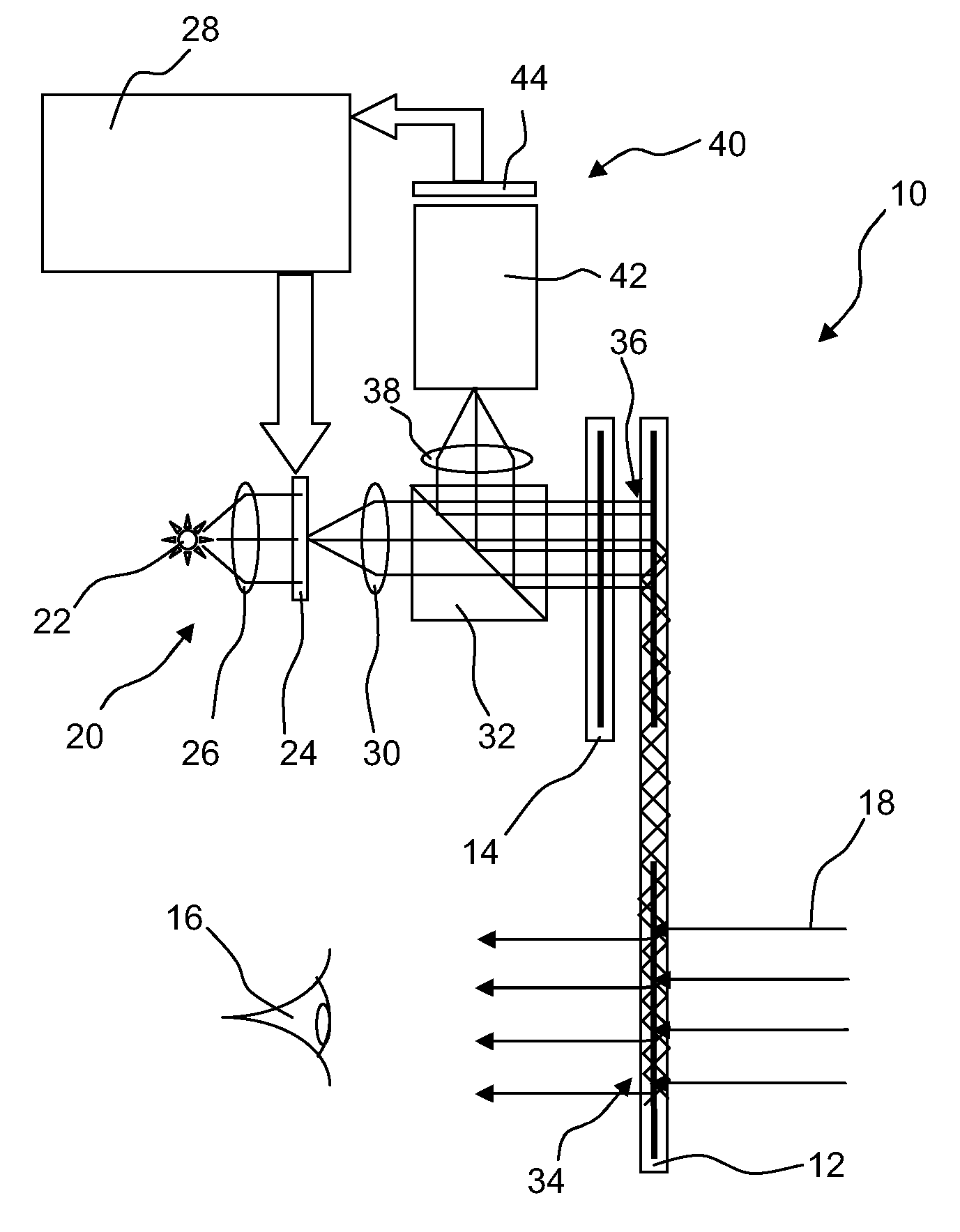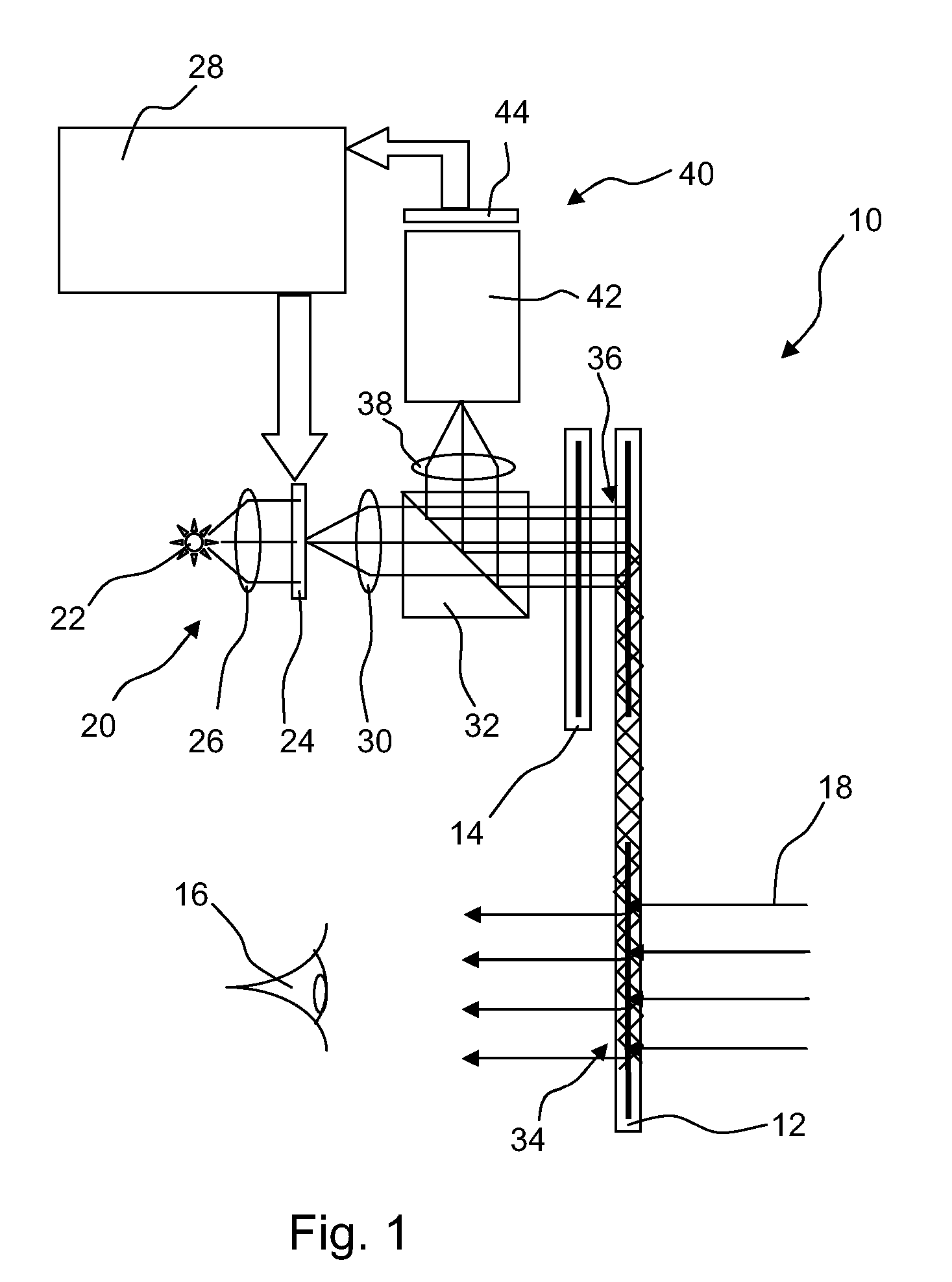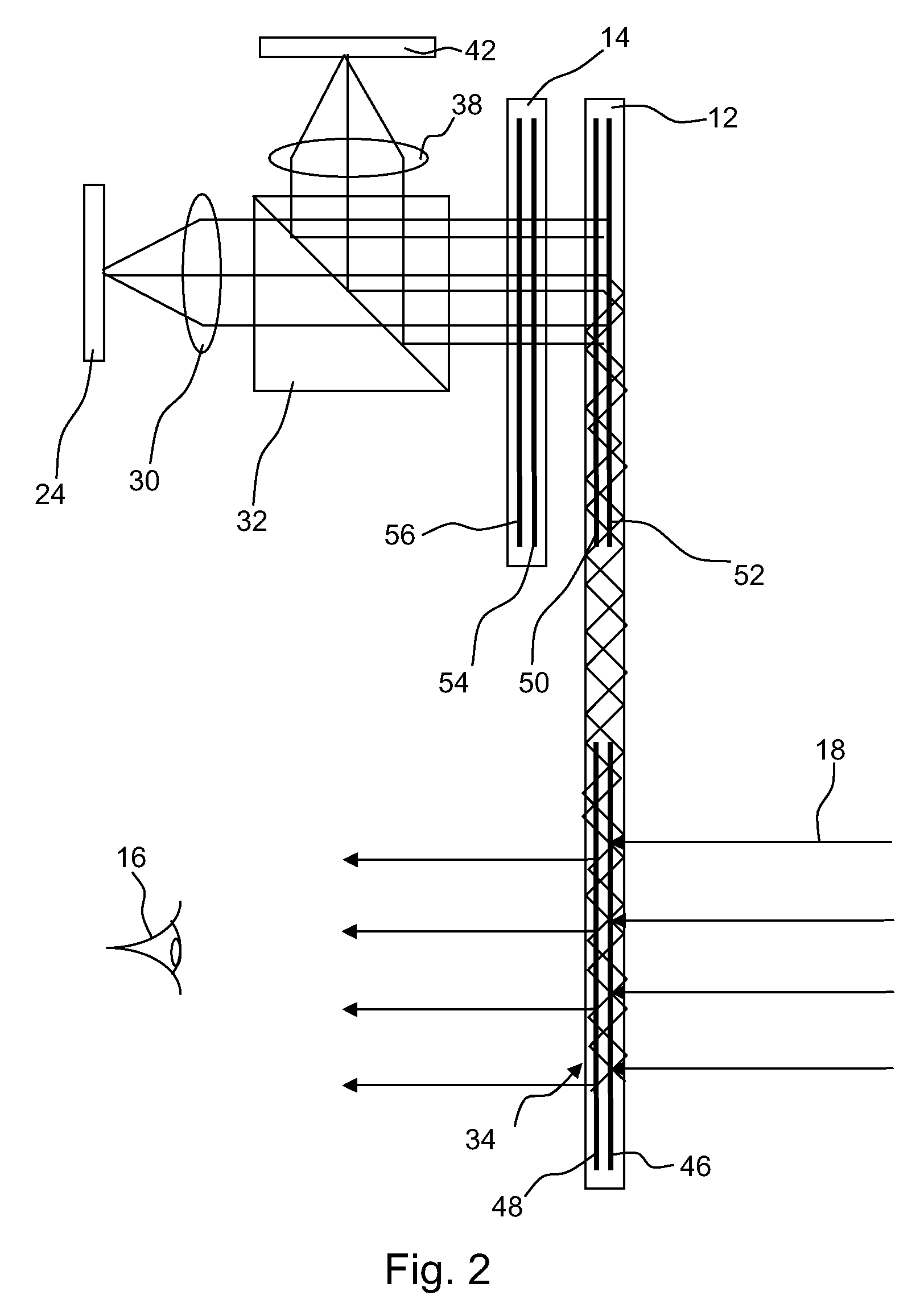Improvements in or relating to display systems
a display system and display technology, applied in the field of display systems, can solve the problems of affecting the effect of display, and affecting the perception of users, so as to reduce the effect of hyperstereopsis
- Summary
- Abstract
- Description
- Claims
- Application Information
AI Technical Summary
Benefits of technology
Problems solved by technology
Method used
Image
Examples
Embodiment Construction
[0022]Exemplary embodiments of the present invention will now be described in more detail, by way of example only, with reference to the accompanying drawings.
[0023]Referring to FIG. 1, a display system 10 includes a primary waveguide 12 and a coupling waveguide 14 arranged substantially co-planar with one another. The primary waveguide 12 is arranged such that a user 16 can view light from a forward scene 18 through the primary waveguide 12.
[0024]An image source 20, including a light source 22 arranged to illuminate a display device 24 via a collection lens 26, is arranged to generate an image to be displayed to the user 16. Collection lens 26 is arranged to focus light from the light source 22 on to the display device 24. The image generated by the image source 20 is dependent on signals generated by an image processor 28 that is used to drive the display device 24. The display device 24 can be a suitable digital display device that is transmissive to light constituting the image ...
PUM
 Login to View More
Login to View More Abstract
Description
Claims
Application Information
 Login to View More
Login to View More - R&D
- Intellectual Property
- Life Sciences
- Materials
- Tech Scout
- Unparalleled Data Quality
- Higher Quality Content
- 60% Fewer Hallucinations
Browse by: Latest US Patents, China's latest patents, Technical Efficacy Thesaurus, Application Domain, Technology Topic, Popular Technical Reports.
© 2025 PatSnap. All rights reserved.Legal|Privacy policy|Modern Slavery Act Transparency Statement|Sitemap|About US| Contact US: help@patsnap.com



